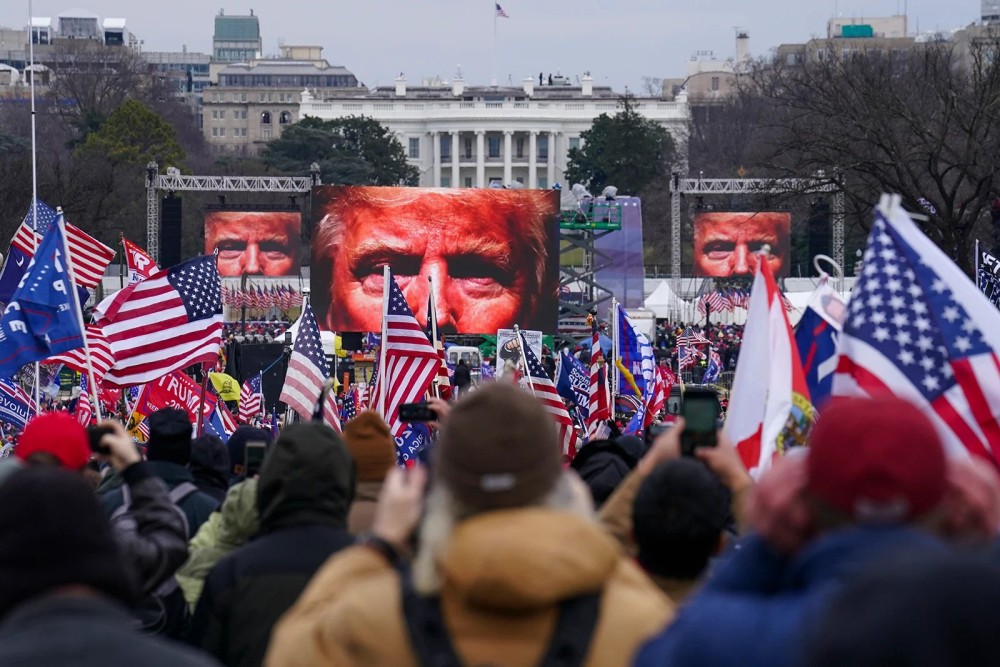As chaos hits Capitol, people of faith respond

On the morning of January 6, a small, interfaith prayer circle surrounded a Black Lives Matter sign, created to replace similar banners repeatedly stolen and destroyed by the far-right Proud Boys in December.
Then, near the end of the service, a gaggle of men adorned in patriotic clothing and “Make America Great Again” hats approached. One walked into the middle of the circle, pretended to fall, and laid on the ground while another man knelt on his neck—an apparent attempt to mock the 2020 killing of George Floyd at the hands of police.
The group then walked across the street—where National City Christian Church had just unfurled a 16-foot Black Lives Matter banner—and repeated the performance in front of cameras.




